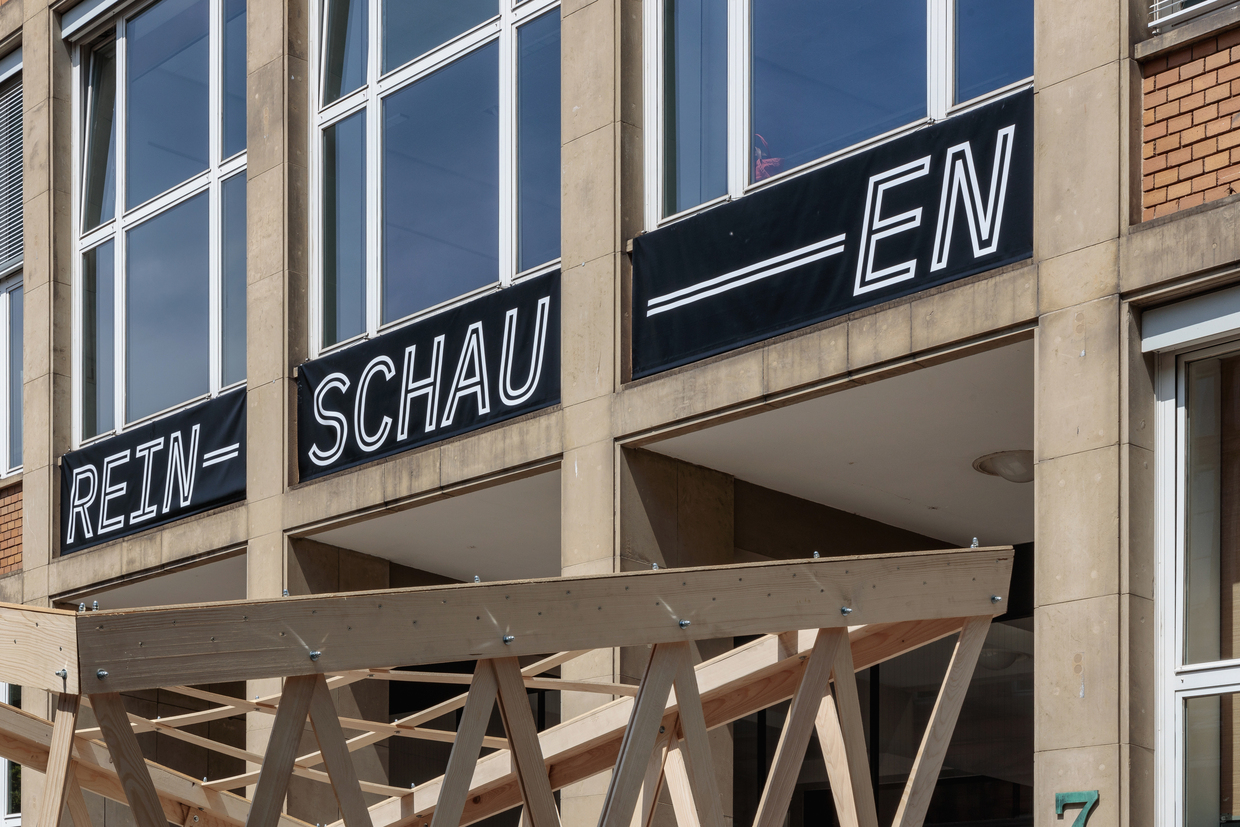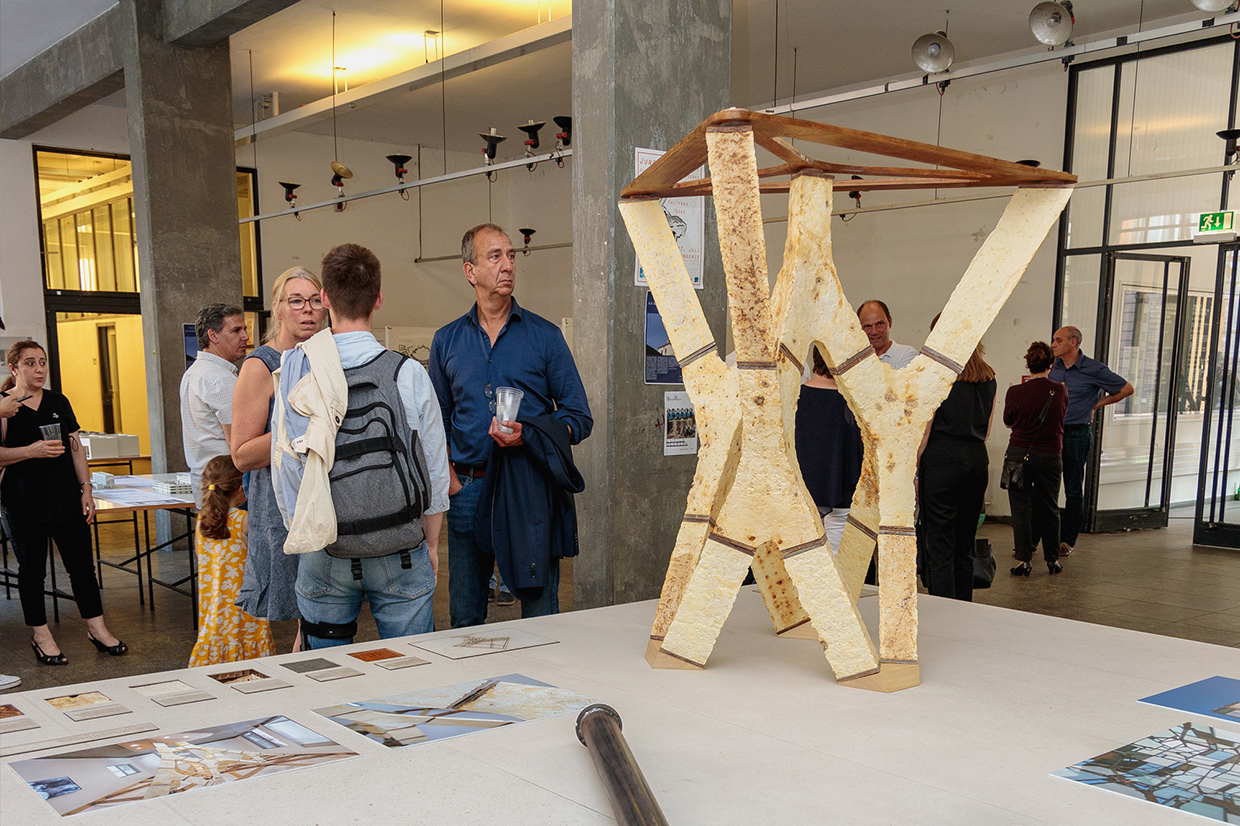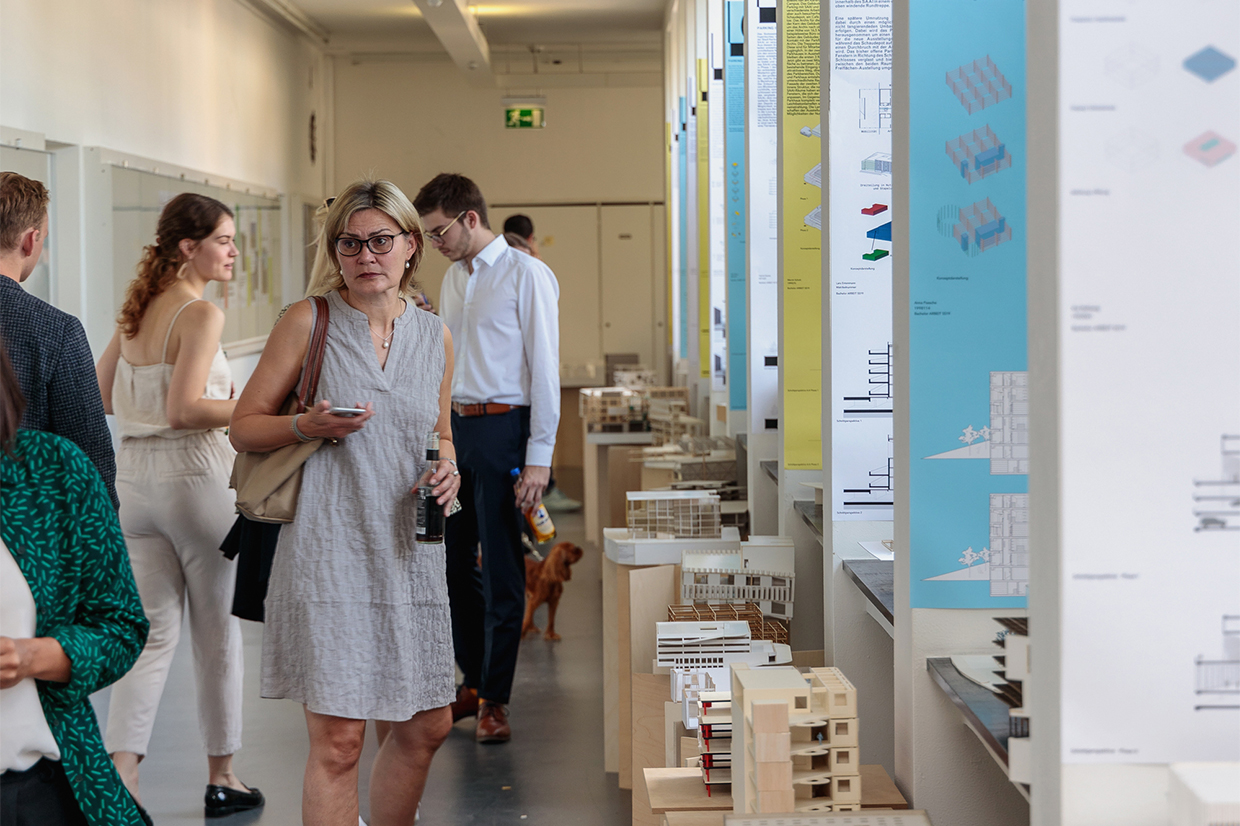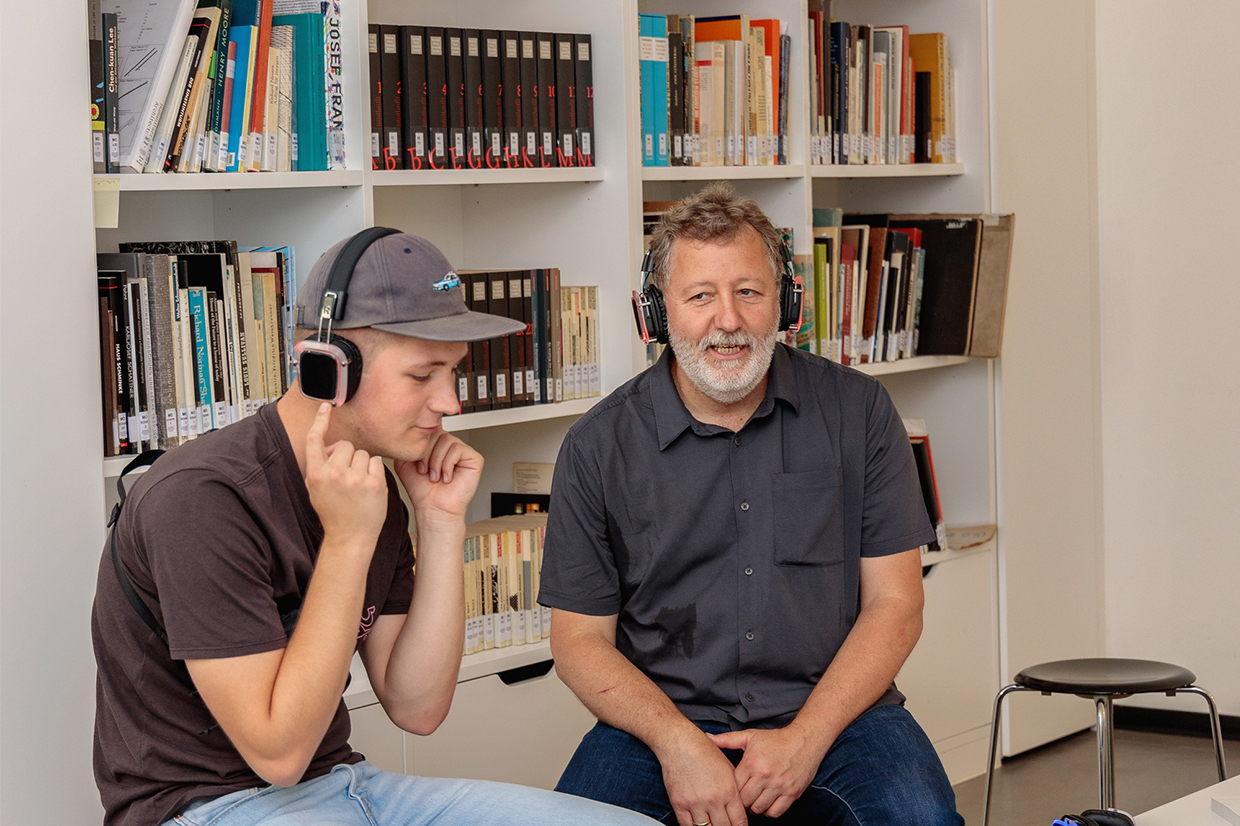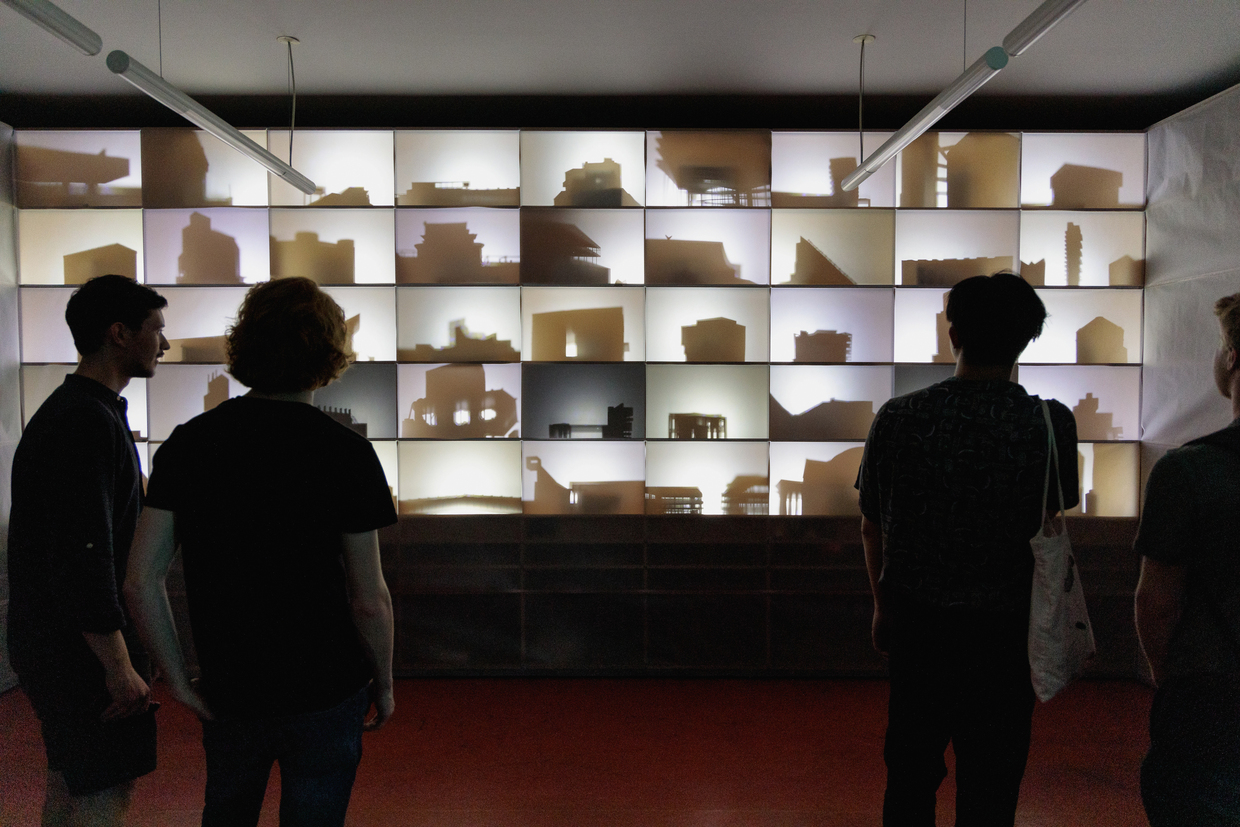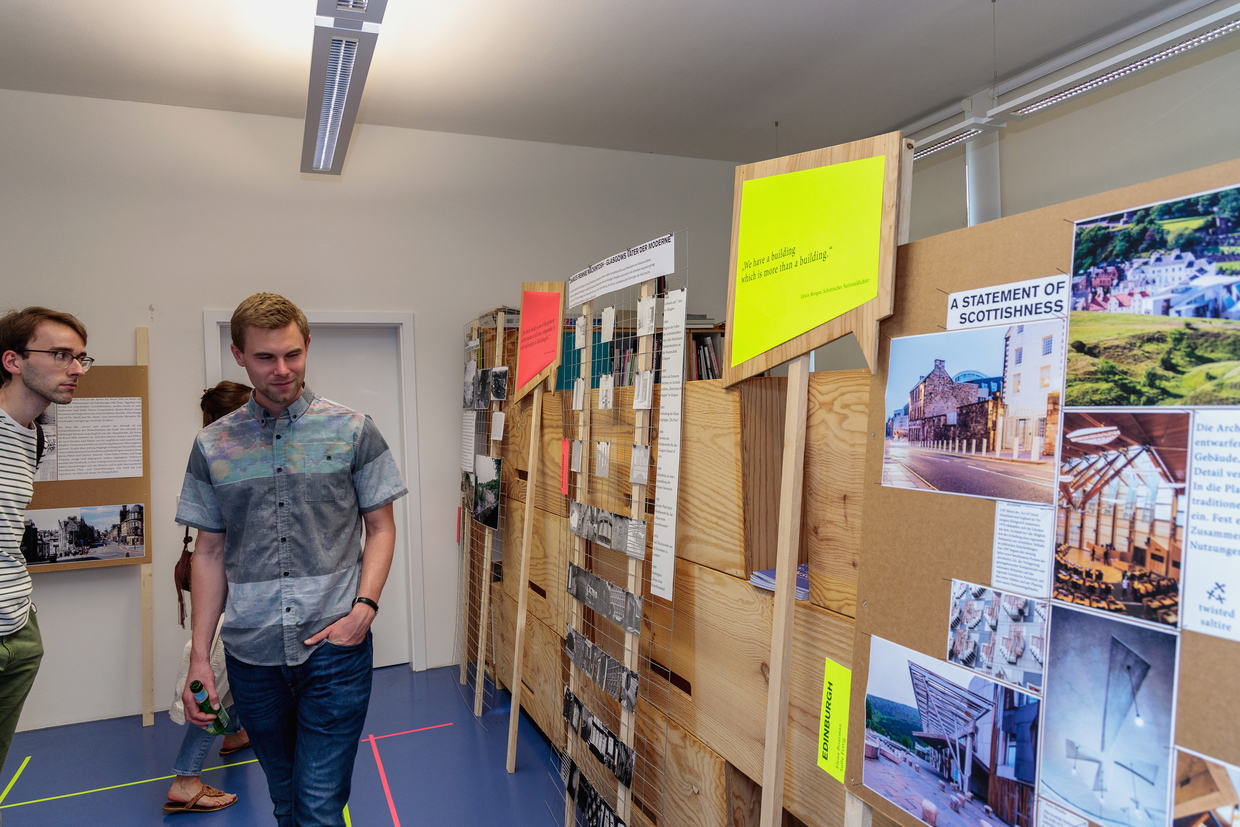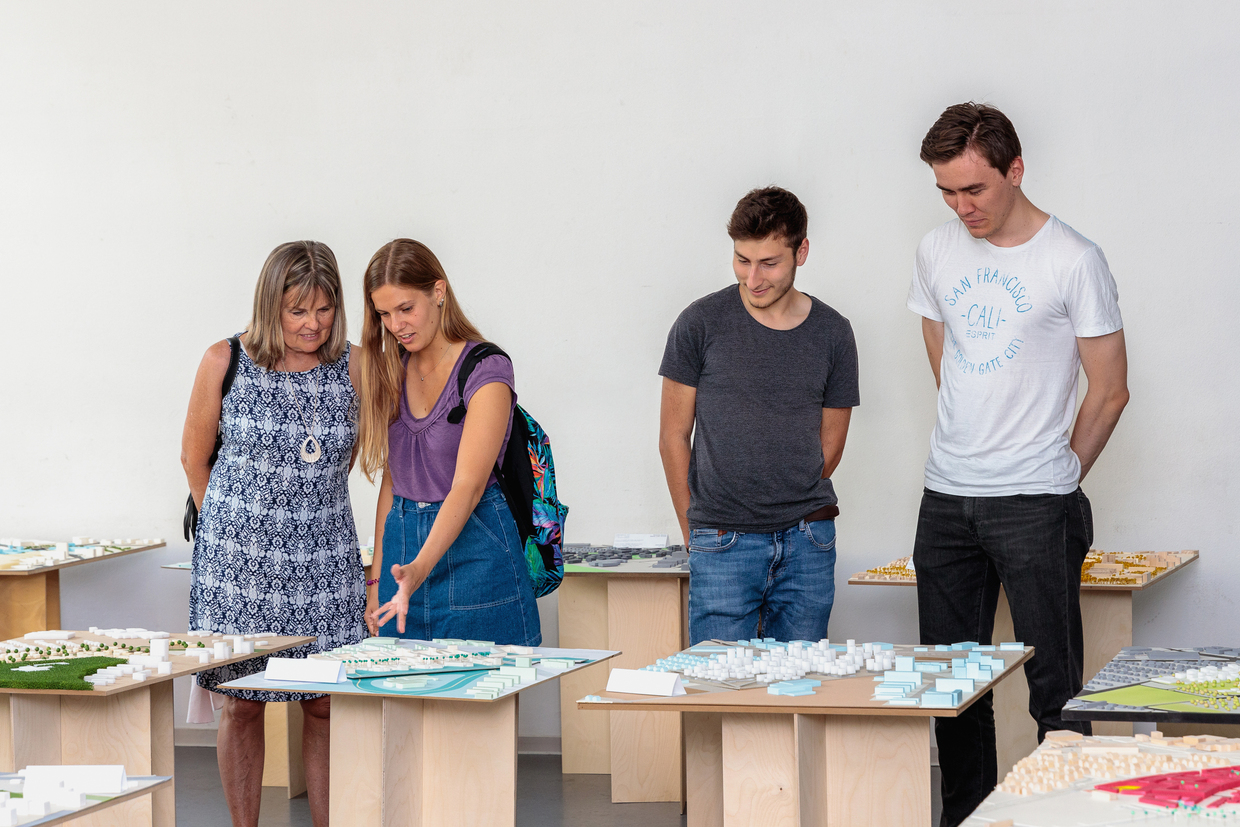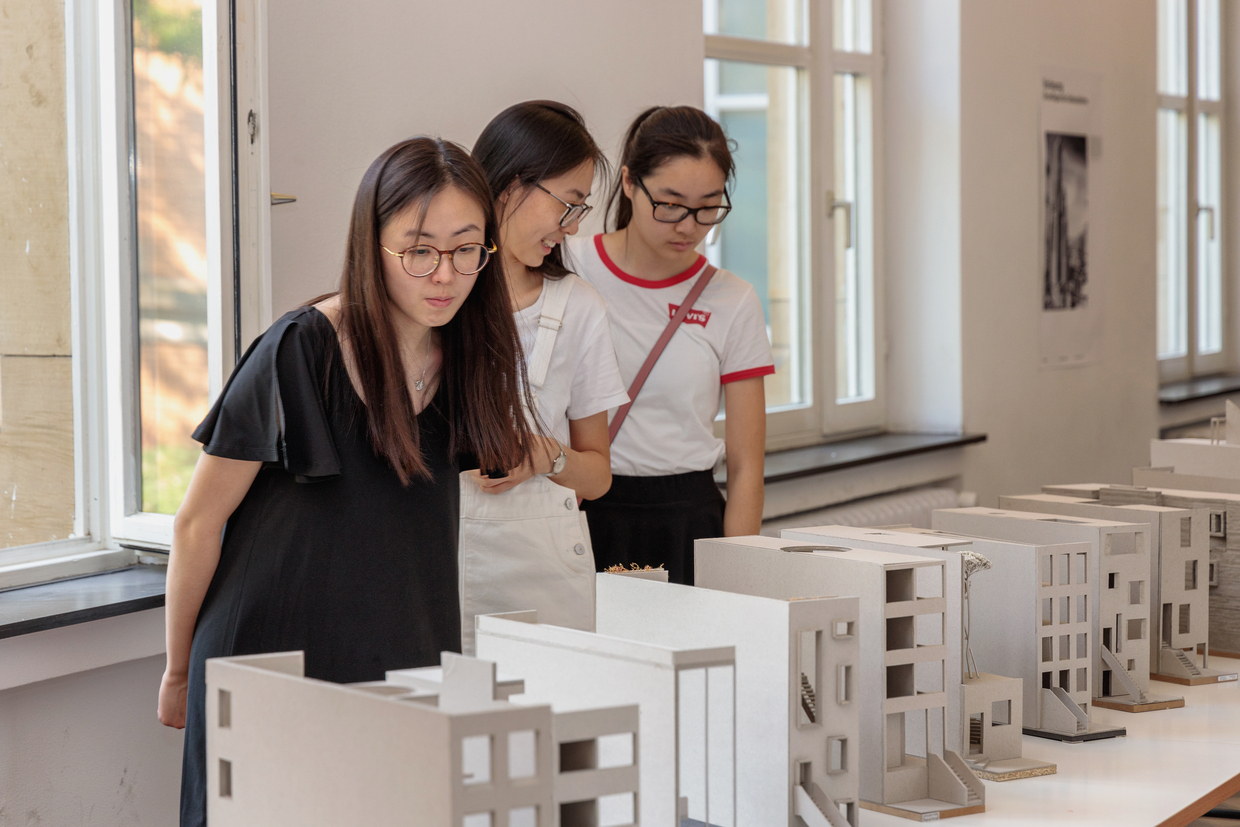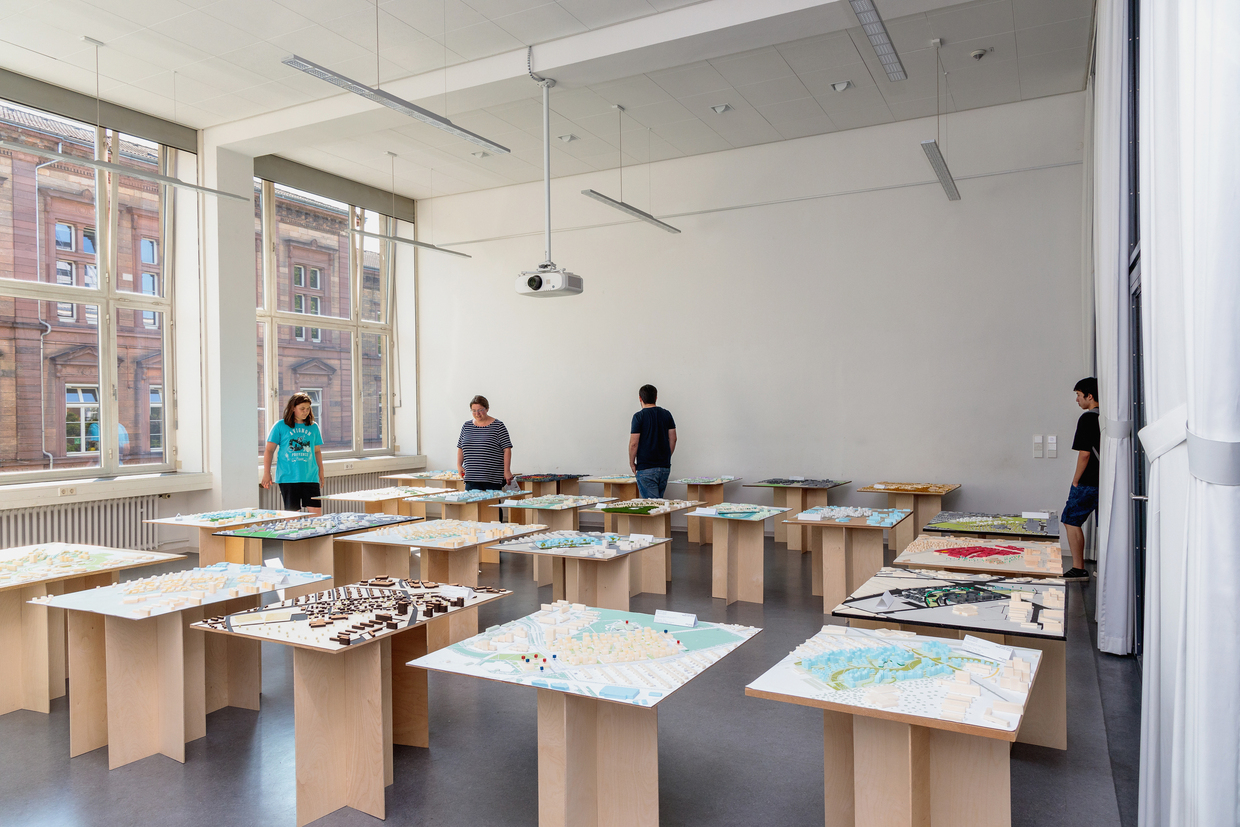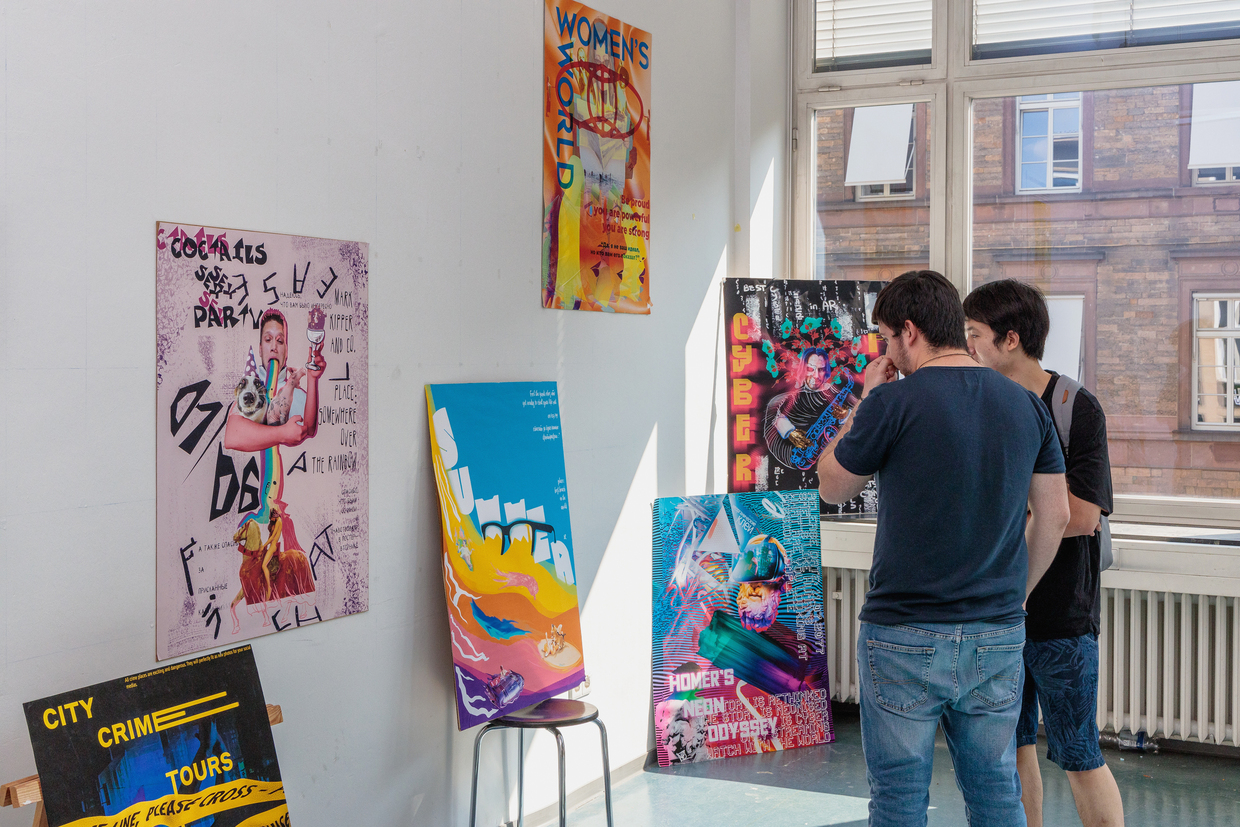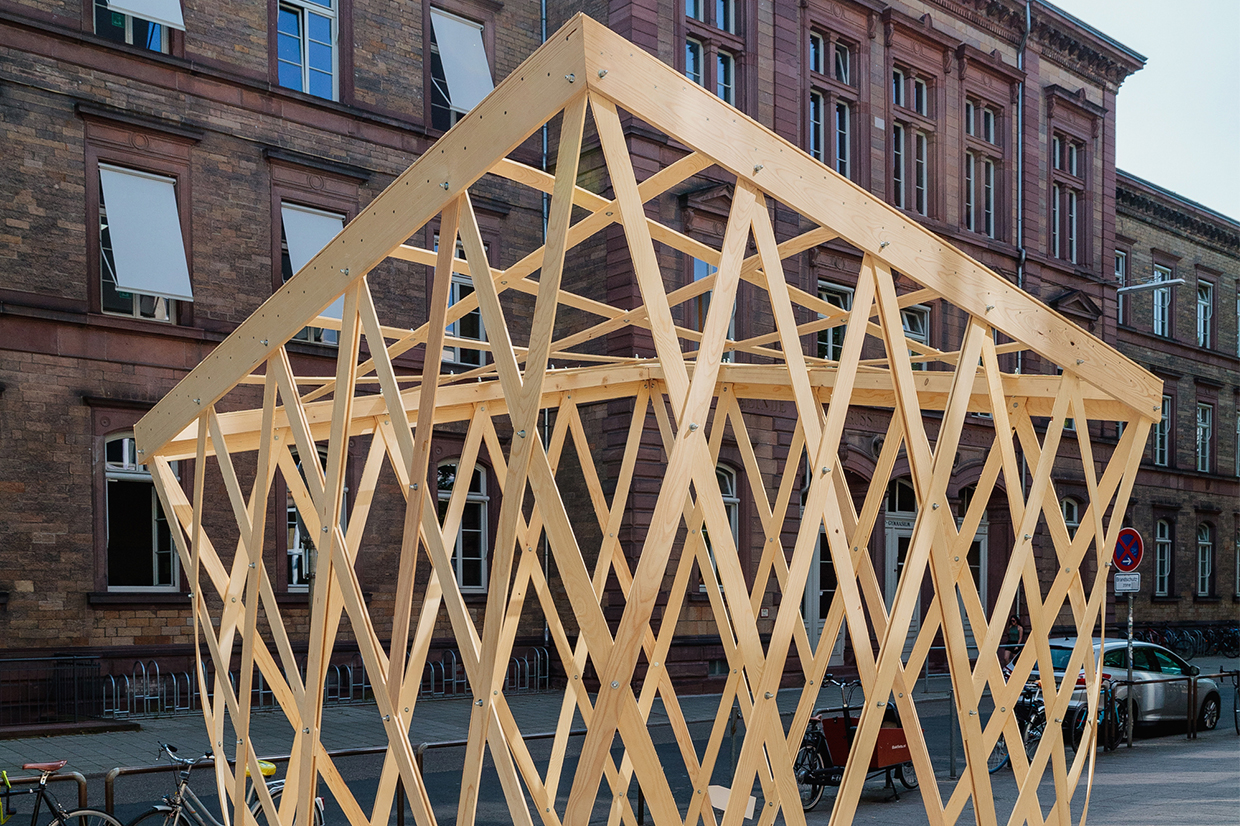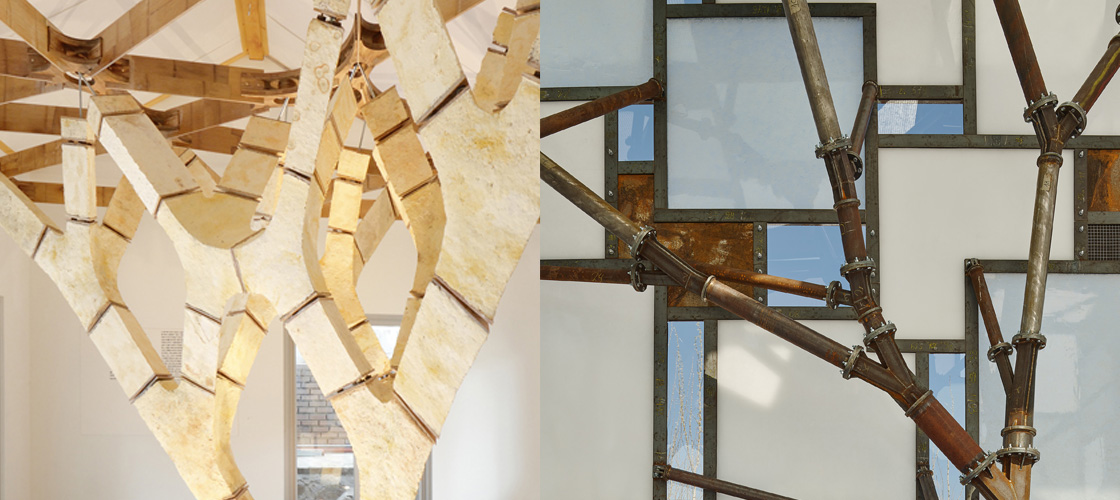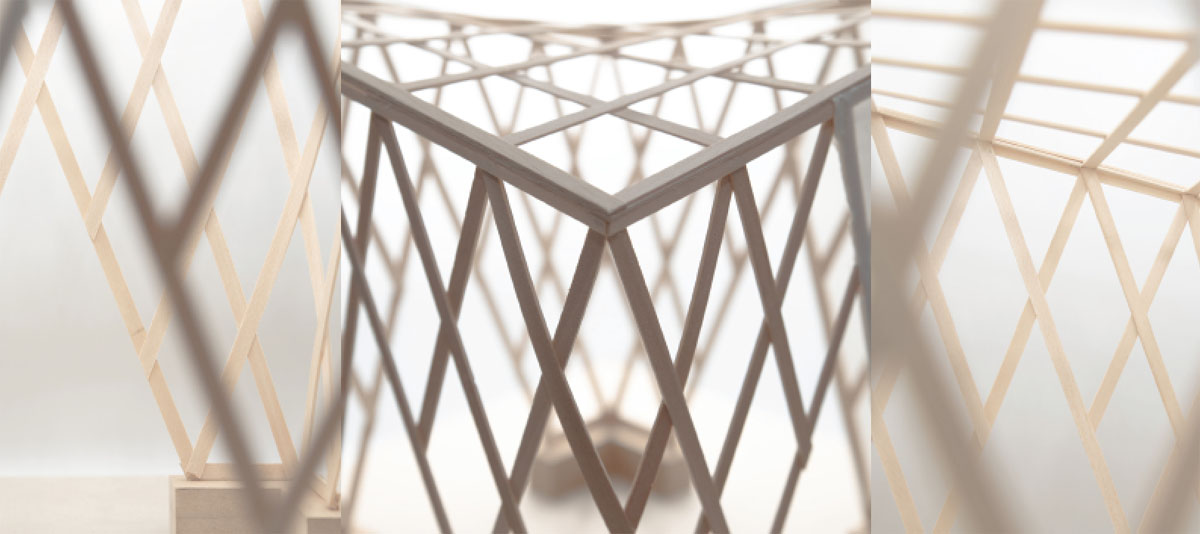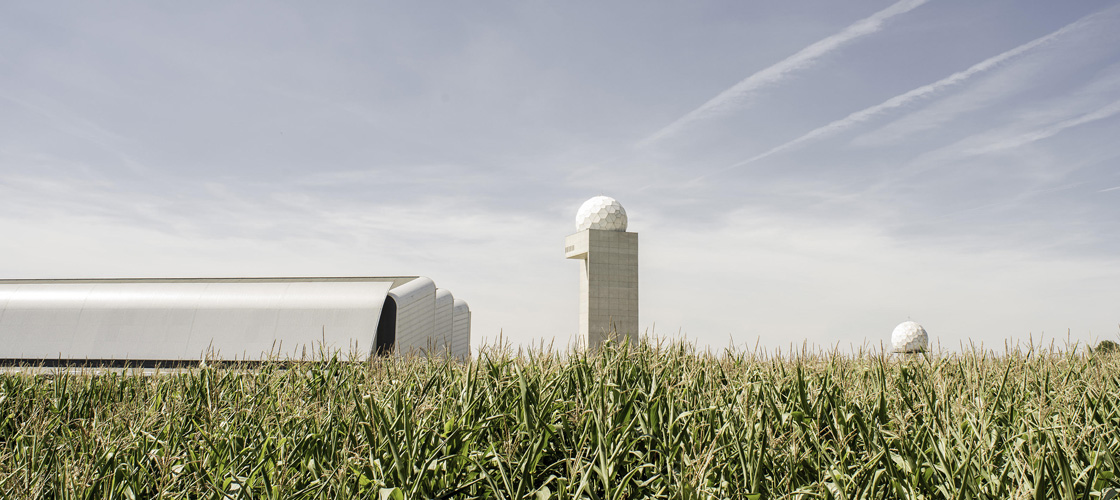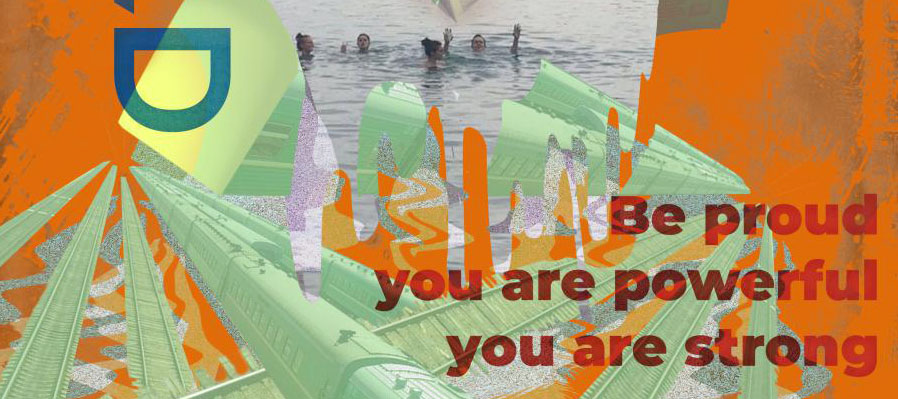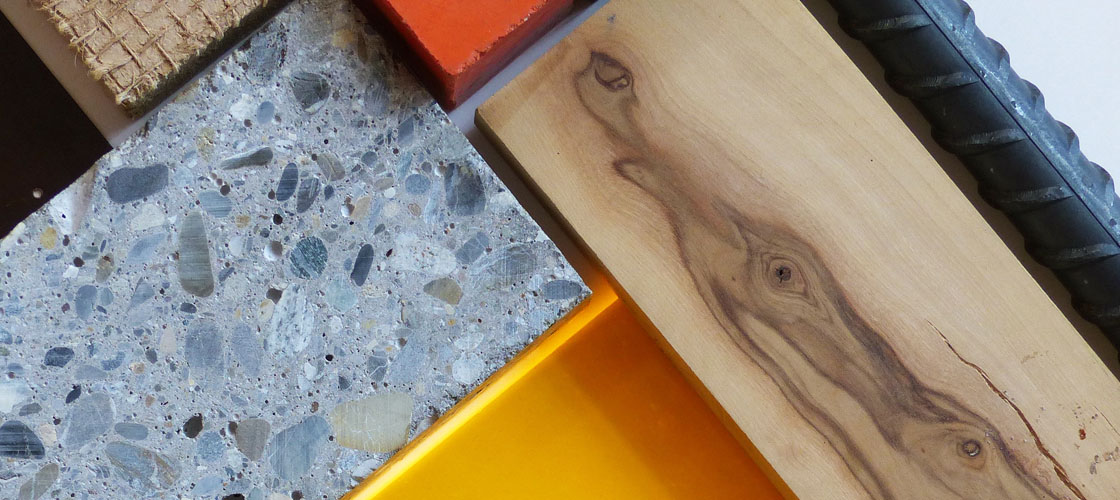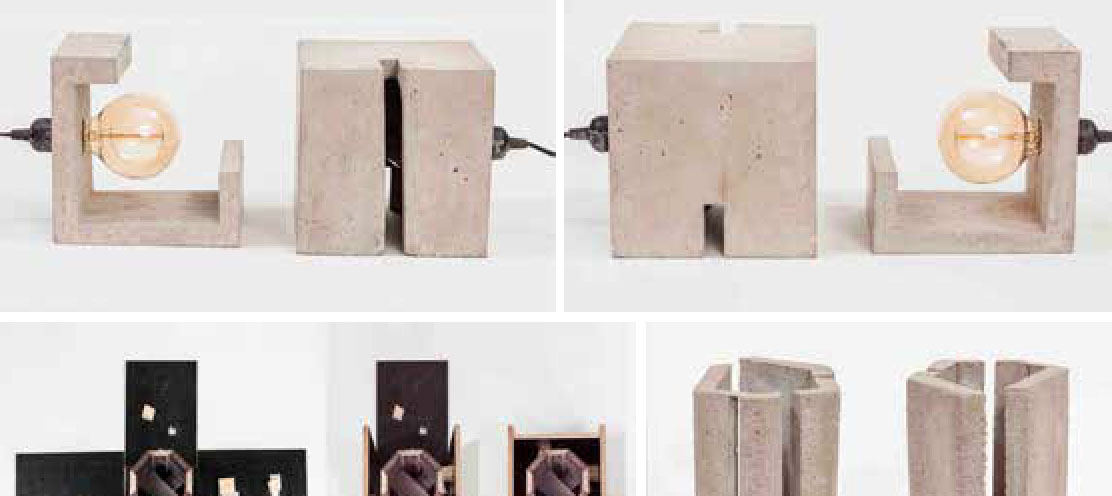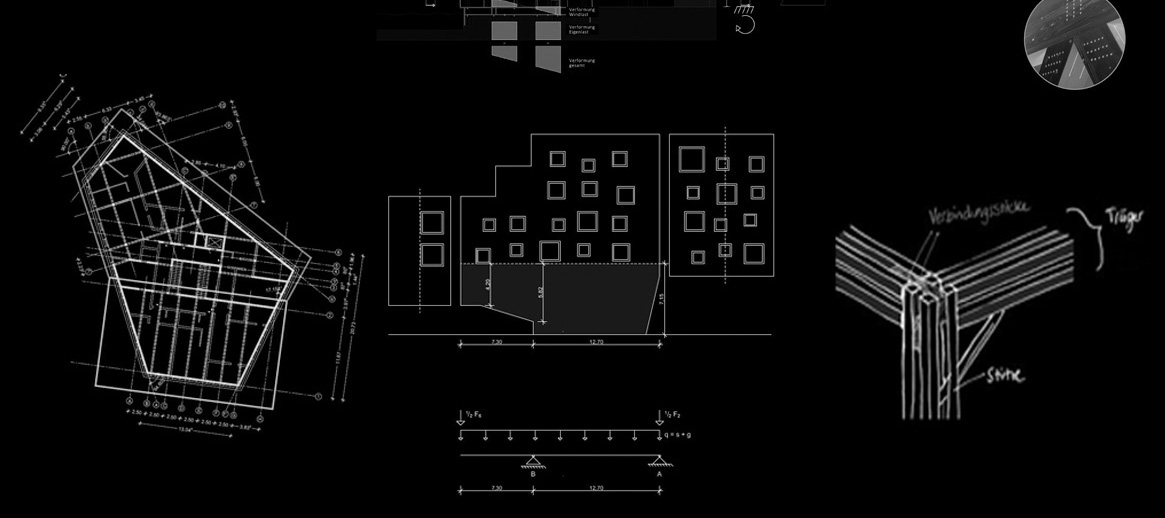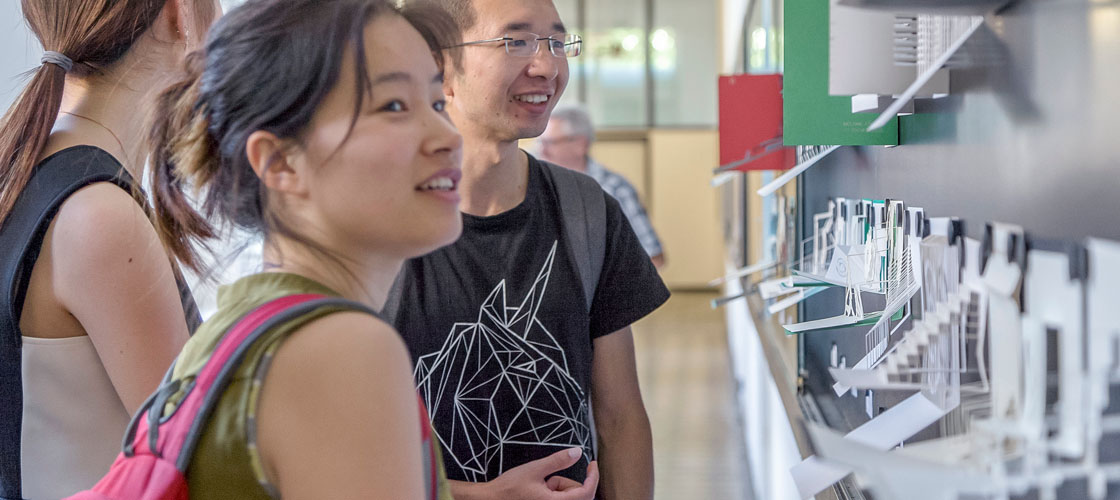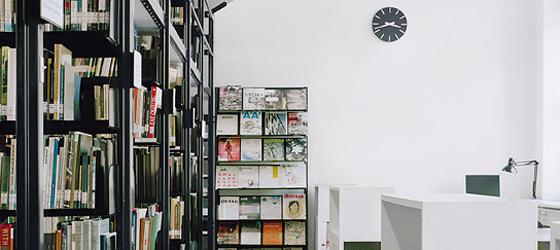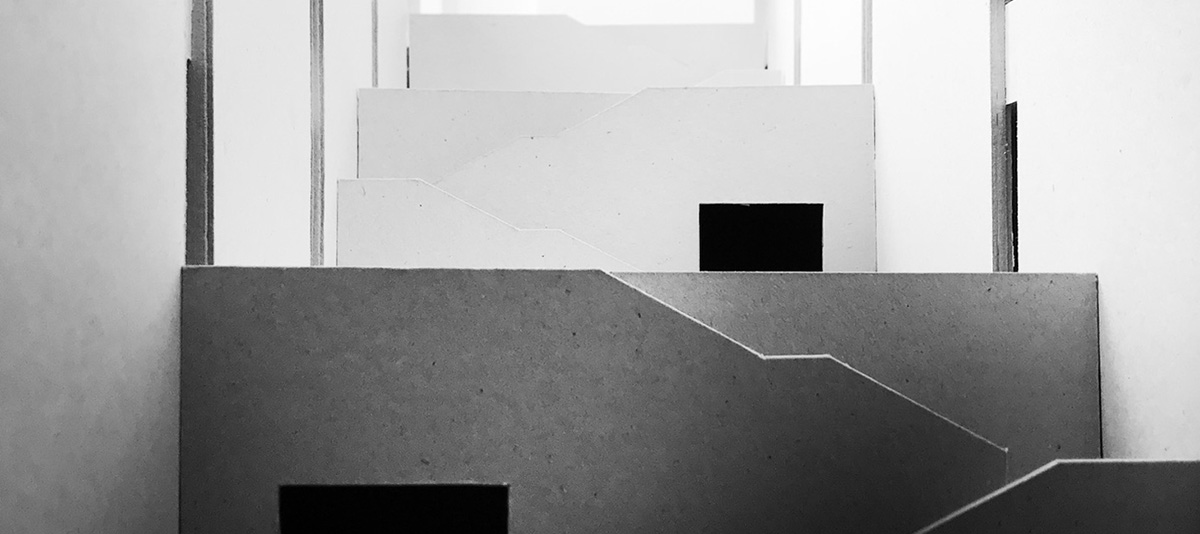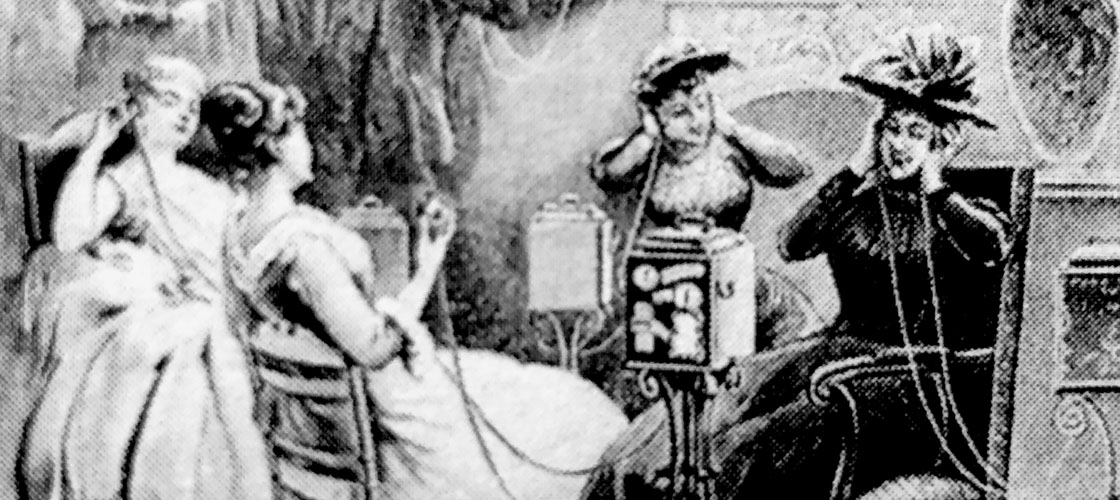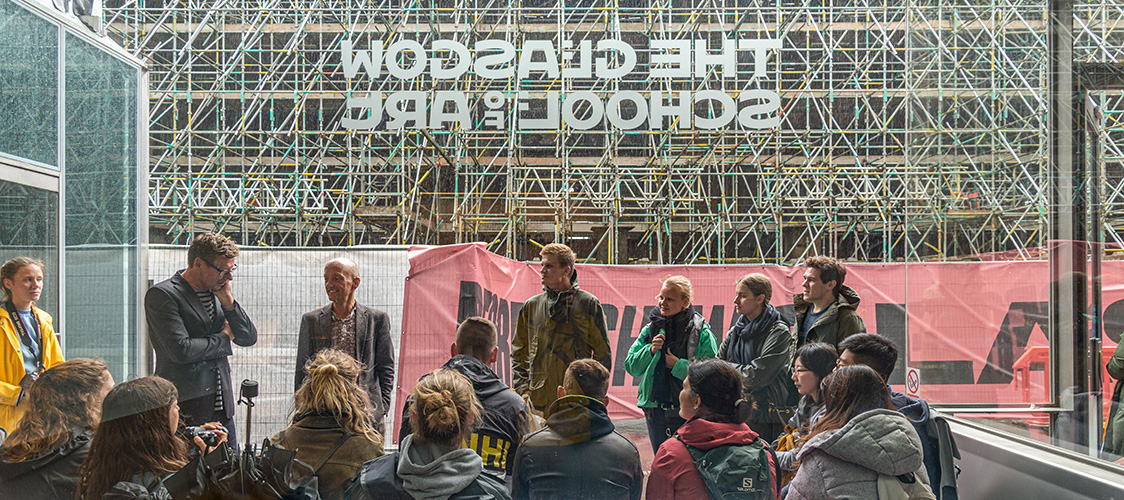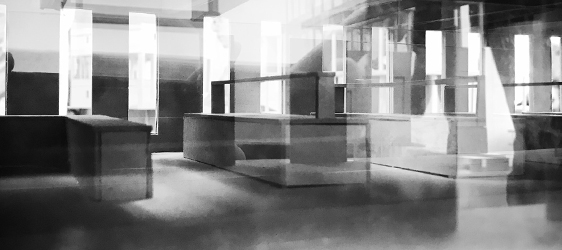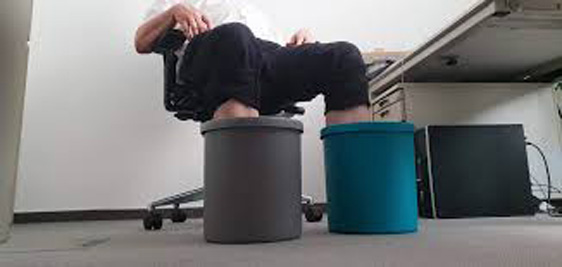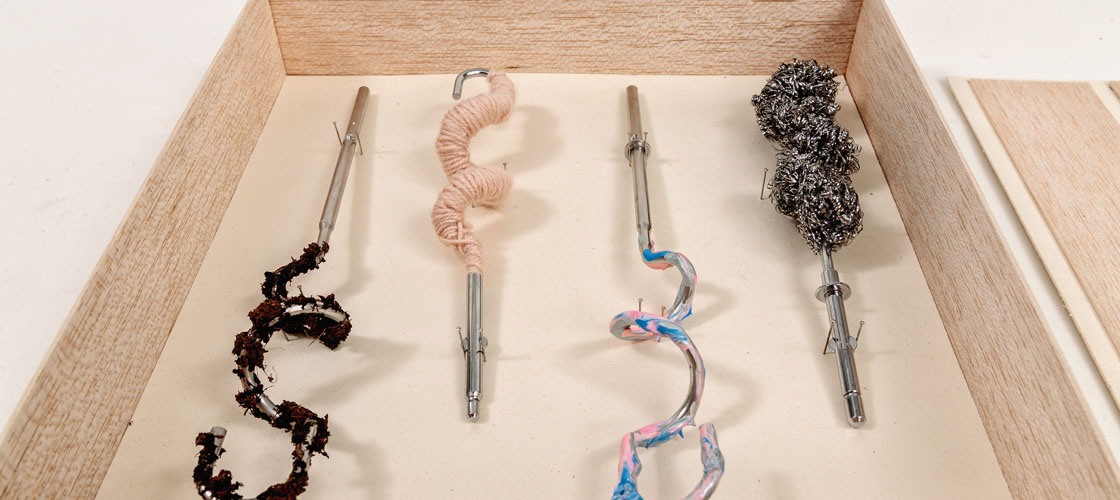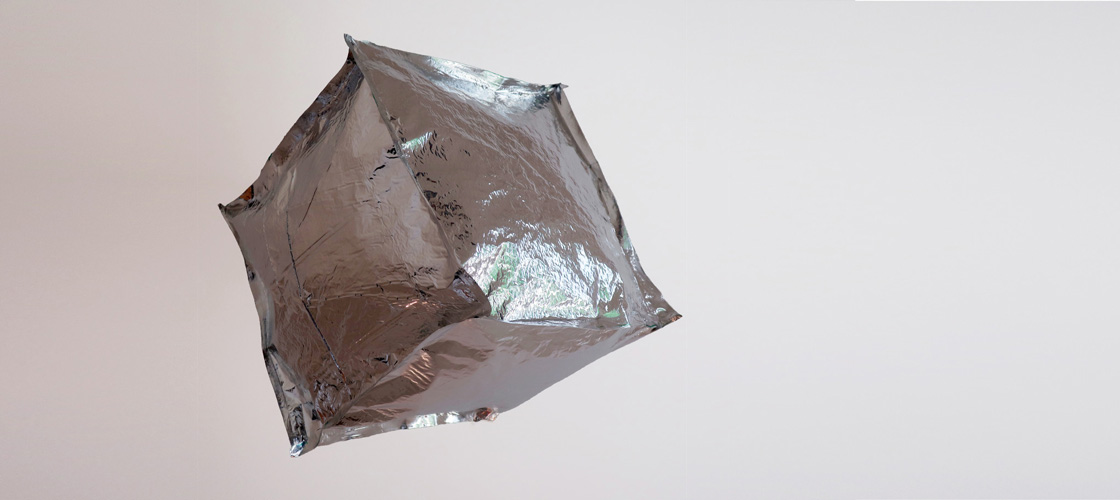Reinschauen 2019
Annual exhibition of the department
July 17, 2019
4 to 9 p.m.
It's that time again! At the end of the summer semester, the Department of Architecture at the Karlsruhe Institute of Technology cordially invites you to its annual exhibition. On July 17, 2019, from 4 to 9 p.m., the departments, workshops, and studios will present work and projects from the past academic year and provide an insight into the range of teaching and research at the department.
The programme includes presentations, short lectures, guided tours, the farewell of the Bachelor graduates, the exhibition of the Bachelor theses, the awarding of the Heinrich Hübsch prizes and the presentation of the new yearbook of the department.
It's worth a look!
Department of Architecture
Campus South / Building 20.40
Englerstrasse 7
76131 Karlsruhe
The program
(Updated 07/11/2019)
Ground floor:
Information stand of the department
Foyer
Here you can get
- the program of the annual exhibition
- Information material about studying at the department
- the yearbook 2019, hot off the press
In addition, this is the starting point of the guided tours at 17:30 and 20 o'clock.
Bachelor farewell
Ceremonial farewell of the Bachelor graduates and awarding of the Heinrich Hübsch Prize
Fritz-Haller lecture hall, 18:00 to 19:30 hrs.
Presentation of the Bachelor theses
Department of Building Science
Foyer, right
Student house in Karlsruhe
The topic of the bachelor thesis in the summer semester 2019 is the type of student house and the question of what role the student house assumes in the 21st century for the city and its inhabitants. We are aware that from today's point of view the type 'student house' is perhaps no longer understood as a contemporary building for communal living and working during one's studies. Nevertheless, the student house can more than ever be a place of community and encounter in the fabric of the city. This definition of a student house is contrasted with the idea of the city. An intensive and specific treatment of the urban space is in the foreground in order to find an architectural idea for the structure, typology and design of a "student house" for Karlsruhe.
Department of Building Planning
Foyer, left
Parking and SAAI
In their bachelor thesis, the students design a building which, during its first life cycle, is a parking garage on the campus of the
of the KIT. However, the structure and main spaces are already designed in such a way that the Study Center for the SAAI with an attached archive can be created with little construction effort. The fictitious building site is located next to the Department of Mathematics and only a few steps away from the Department of Architecture. Today, this prominent urban site at the interface of city and campus is a parking lot. The task set is a combination of two real needs: SAAI's space is now reaching the limits of its capacity. The documents gathered in the archive are important enough in terms of architectural history that not only their preservation, but also the research and exploitation of the archive's holdings require dedicated spaces. The second real need is obvious to any visitor to KIT: the outdoor spaces of the campus close to the city are primarily parking spaces and thus lost to any more interesting activity. Technologies and people's mobility behavior are undergoing major changes and there are many indications that classical parking will become less important. Therefore, it does not make sense to create buildings only for this one purpose. The students develop an architectural project from their own analysis of the site, the dual purpose and a speculation in relation to future mobility.
Department of Sustainable Building
Foyer, Center
Changing Paradigms - New Approaches to an Innovative Building Culture
Alternative, cultivated building materials and a cycle-based construction industry - we urgently need new principles to meet fundamental ethical, climatic and social demands. The radical transformation of the building industry is upon us - the exhibition shows examples of such rethinking with two projects of the Chair of Sustainable Building recently honoured with innovation awards - the Mycotree project - a load-bearing system grown from mushroom mycelium - and the Mehr.WERT Pavilion, which can currently be seen at the Federal Garden Show in Heilbronn.
Photos: Carlina Teteris, Zooey Braun
Department of Architecture and Furniture
Outside in front of the main entrance (weather permitting)
Red Carpet - Architecture Meets Everyone
Right inner courtyard
Architecture bar of the architecture student body
Drinks and food
Department of Building Studies
in the exhibition pavilion
The architectural space
1st semester Bachelor
Left inner courtyard
Department of Building Technology
Aranciera
The Aranciera is an independent object that can be used as a pavilion, but also as a functional building in horticulture. The design by Aurelius Tauer, Tayfun Veli and Rasmus Zirlewagen is intended to provide not only structural lessons but also new insights into the textile covering of wooden structures and to open up new fields of application for lightweight wooden load-bearing structures, as envisaged by great role models such as Frei Otto's Multihalle at the 1975 Federal Garden Show in Mannheim. The shell construction optimally utilizes the wood as a structural material in terms of both tensile and compressive forces.
Photos: Aurelius Tauer, Tayfun Veli and Rasmus Zirlewagen
1ST FLOOR
Institute Design of City and Landscape:
Departments of Landscape Architecture, International Urban Design, Urban Neighborhood Planning, and City and Housing.
Room 104 (Green Grotto) and Foyer
16:00 until 20:00
(SUB)URBAN?
In the exhibition of the Institute for City and Landscape, the departments exhibit different media about selected courses. Models, photos, books and discussions will be presented from the places that students, as well as teachers, have dealt with in the last semesters. The designs, workshops and seminars are presented in excerpts and in a process-like manner. In room 104 - the "Green Grotto" - a model landscape invites you: Wander through the currently processed designs of the 4th semester Bachelor students, through a design area on the edge of Oberreut. The models show the interim status of the students' designs for a new residential area. In the foyer on the 1st floor there is a photo exhibition dealing with non-urban spaces and a large book table with various publications to browse and discuss. Slideshows show impressions of field trips and workshops of the departments, and give an insight into the multi-layered issues of contemporary urban and landscape planning at different ends of the world.
Photo: Jeff Mirkes
Department of Architecture and Furniture
Egon Eiermann Lecture Hall
Film screening "Away from all Suns
Poetry + Anarchy + Russian Avantgarde Architecture
17:00 to 17:45
Author's film by Isa Willinger (Berlin)
arch.lab
Foyer 1st floor
LehrehochForschung
In the winter semester 2018/19 and in the summer semester 2019, six seminar formats from very different subject areas of the department were or are represented in the arch.lab - all of them addressing the question of how one can "learn to research" within architectural education - and which procedures and methods play a role in this. The concepts and (initial) results of the seminars will be presented in the form of spotlights.
The following projects were worked on in the LehrehochForschung programme:
- Development of Building Products with Ceramic 3D Printing & Local Material, Local Design, Local Built (Sandra Böhm / FG Sustainable Building).
- "This Nature" and "Nature 2.0" (Susanne Gerstberger / FG Landscape Architecture)
- NO FAQ. artistic research, postcolonial utopias, digital culture and you (Franny Kranz / Visual Arts)
- The place, the identity, the architecture (Ulrike Fischer / FG Design and Construction)
- Atlas of Large Housing Estates in Thuringia - Space Identity (Nicolas Rogge / International Urbanism)
Open Studio
Room 105
Behind the facade - students of the class of 2019 .
How many nights do you have to work through to study architecture? And what tricks do you use to do it? The Bachelor graduates of the class of 2019 introduce themselves in the form of profiles. Here you can get an idea of what it means to study architecture, what moves the students and what happens behind the walls of the department.
Poster Tuesday Experiment
Taimur Mokhammad's posters were created through interaction with his followers on Instagram. Each week, he asked them via video message to send him their favorite photos. From these photos, he created a poster - either spontaneously or on a theme previously agreed upon by the followers. He in turn documented the process of creating the posters as a video on Instagram.
Fig.: Taimur Mokhammad (detail)
Sustainable Building
Room 141.1 (Material Library)
Materials Diversity
The Materials Library houses a comprehensive stock of building materials. On the look-in day, a selection is presented across the systematics of the material groups. How do the individual materials and building products relate to each other? Which material is the starting point for which building material? Are there still new unexpected combination and application possibilities for well-known materials? The exhibition invites visitors to think about and discuss such questions together over refreshments.
Photo: Sandra Böhm
Study workshops
Room 136
The study workshops wood, model, metal, photography and digital present exemplary projects.
Department of Building Technology
Hallway in front of room
Lanterns made of concrete and light
Free-standing designs
The concrete bar designs of the Department of Building Technology challenge the students to deal with the conditions of material and technology in a creative and craftsmanlike manner in order to introduce them to the essence of materials. This can lead to sensible construction and material-appropriate processing in plausible load-bearing structures. Multiplied by temperament, skill, patience and the joy of experimentation, small objects full of character are often created.
Photo: FG Building Technology
Department of Load-bearing Structures
Room 130
16:00 to 19:00 h
Cross-section of teaching and research
On the basis of selected student work, the teaching spectrum of the department will be presented. Particularly successful models and sketchbooks will be exhibited. In addition, a slideshow will be shown that provides a cross-section of the teaching programme of the Bachelor's and Master's degree courses. An insight into the research activities of the department will be given in the form of project posters and a slideshow.
Fig.: FG Structures
Master's programme in the restoration of old buildings
In the corridor in front of room 130
16:00 to 19:00 h
Cross-section of teaching and research
The teaching spectrum of the course will be presented on the basis of selected student work. Particularly successful designs and models from the first semester and the master's thesis will be shown. An insight into the research activities of the course will be given in the form of project posters and brochures.
Building Lifecycle Management (BLM)
In front of room 118
PopUpExhibition
The exhibition shows student works created using the Japanese folding technique "Kirigami". The applied paper-cutting art "Kirigami" is reminiscent of the widespread folding technique "Origami" and creates objects with different light and shadow reflections. Among other things, cards and furniture were folded.
Photo: Photography Study Workshop
Department of Building Studies
Room 112
"Living in New York"
4th semester
In the corridor in front of the department
"Cultural Center in Paris"
"Living on top of a parking garage in Hamburg "
Upper grade
"zukunft strahlt - final repository for highly radioactive waste for Germany "
Master's thesis
Department of Architecture and Furniture
Seminar room 108
16.00 to 20.00 h
"Architecture + Furniture " - Projects + Studies
Model / Design / Impromptu / Excursion (short film China)
Departmental Library of Architecture
Room 106
16:00 till 20:00
B³ Books and punch in the library
The Departmental Library of Architecture offers until 20.00 hrs: Book flea market and summer punch (also without alcohol) If required and demanded, the staff members will guide you through all floors at 18.00, also gladly through the Werner Sewing Library. We look forward to seeing you!
Photo: Study Workshop Photography
Department of Art History
Room 106 (Werner Sewing Library)
16:00 until 20:00
DFG-Project "Emancipatory Living
The project "Emancipatory Living" provides an insight into the research activities of the Department of Art History. The main focus is on the scientific processing and digitalization of the estate of the architect, architectural historian and feminist Myra Warhaftig (1930-2008).
Using selected archive materials and display boards, the project traces the development of her proposal for social housing of the 1970s and 1980s, which was oriented towards the concerns of women.
2ND FLOOR
Presentation of the bachelor theses
Department of Space and Design, Department of Building Planning, Department of Building Construction
In the foyer and in the corridors of the 2nd floor
Department of Space and Design
NON SCHOLAE SED VITAE DISCIMUS ("Not for life, but for life we learn")
The studio deals with institutional spaces. How do these embody social rituals and rules and how are the latter formalized with their help? The school landscape in Germany is changing. According to current studies, the ongoing trend towards all-day schooling will result in a need for 10,000 new classrooms over the next 15 years. The institution of school is to be understood not only as a processually changing place of learning and communication, but also as a place for everyday life and leisure. In the current semester, the students are dealing with new conceptual, programmatic and spatial approaches for the institutionalized overlapping of learning and everyday life in the context of a community school.
Department of Building Construction
Ozeaneum - Oceanographic Institute Trieste
The subject of the bachelor thesis of an "Ozeaneum" deals with a scientific institute building in Trieste, which offers marine researchers an infrastructural and representative facility at a central location in the Mediterranean. This task draws its topicality from the special challenges for the strong change of the world oceans by noticeable climatic changes, extreme pollutions and strong decrease of the sea creatures and sea plants. The gulf of Venice offers beyond that still special challenges for the sea research.
The examination of the topic and the programmatic ties offered, as well as the special plot of land, should sensitise the students to the topos, the type and the tectonics, so that at the end of the bachelor's programme they will be able to demonstrate in the best possible way the skills they have learned in design and construction, from urban planning to detail, as well as in representation and presentation.
Photo: FG Building Construction
Department of Architectural Theory
Room 258
16:00 till 19:00
AUDIO-BAR
Theory, podcasts & drinks
Image from: La Nature, 1892, vol.2, p. 56.
Department of Architectural Communication
Room 257/259
A Tale of Two Cities: Glasgow & Edinburgh
This year's seminar "Architectural Communication on Site" was dedicated to two Scottish metropolises, Glasgow and Edinburgh, in architectural-cultural case studies. The focus of interest was on the role that architecture and urban development play in the perception and experience of these cities. What is the relationship between historical heritage and current building? Which places reveal cultural potentials, but also social conflicts, and how are architecture and urbanity negotiated and communicated? The exhibition presents the results of the students' research in images, text and video as an exemplary panorama of two communities that are geographically on the periphery but culturally at the heart of Europe.
Photo: Marie Luisa Jünger
DesignConstruct :
Department of Building Construction, Department of Fundamentals of Building Construction and Department of Constructive Design Methodology
Rooms 240, 241, 242 andterrace
work in progress
EntwerfenKonstruieren presents student work from the current bachelor and master courses with plans, models, films, master theses and publications produced at the department. If you are particularly interested, a short tour of the department is possible. In good weather, our terrace invites to lively exchange.
Department of Building Physics & Technical Construction
Room 235
16:00 to 18:00 o'clock
Personalized Comfort Devices
A major research focus of the fbta is thermal comfort in buildings. For this purpose, experiments with test persons are carried out in our own indoor climate test facility LOBSTER, which investigate both the comfort perception and the user behaviour in this respect under different boundary conditions. Many of these experiments focus on individual measures to improve comfort, such as opening windows, operating a sunshade or using a fan. Research activities of other institutions go one step further and develop new objects for comfort enhancement in the immediate personal environment, so-called 'personalized comfort devices'. These are demonstrated at the fbta.
Image: https://s4-eu4.startpage.com/do/search#image-16
Department of Fine Arts
Room 204 (Drawingroom )
Artistic works by students of the Department of Fine Arts
The works from the bachelor and master seminars "Minizine - Bigzine", "The Object" as well as "Relations - Man, Machine, Animal" will be presented in the form of artist books, drawings, objects and sound collages. From 5-6 p.m., there will be a "Sugar Performance" where experimental sugar shapes will be created and can be snacked on.
Photo: Eva Monninger, "function follows function follows", 2019 (photo studio)
Department of Building Planning
Corridor 2nd floor west
Parking and SAAI
In their bachelor thesis, the students design a building that is a parking garage on the KIT campus during its first life cycle. However, the structure and main spaces are already designed in such a way that the Study Center for the SAAI with an attached archive can be created with little construction effort. The fictitious building site is located next to the Department of Mathematics and only a few steps away from the Department of Architecture. Today, this prominent urban site at the interface of city and campus is a parking lot. The task set is a combination of two real needs: SAAI's space is now reaching the limits of its capacity. The documents gathered in the archive are important enough in terms of architectural history that not only their preservation, but also the research and exploitation of the archive's holdings require dedicated spaces. The second real need is obvious to any visitor to KIT: the outdoor spaces of the campus close to the city are primarily parking spaces and thus lost to any more interesting activity. Technologies and people's mobility behavior are undergoing major changes and there are many indications that classical parking will become less important. Therefore, it does not make sense to create buildings only for this one purpose. The students develop an architectural project from their own analysis of the site, the dual purpose and a speculation in relation to future mobility.
Subject area Space + Design
Rooms 218 and 219
The Department of Space + Design presents an overview of the work of the past year. Drawings, models and projections are presented in two rooms.
Department of Descriptive Geometry
Room 215
Architectural Geometry and Digital Design
In the first three semesters of the Bachelor's programme, this course provides a basic understanding of geometric and design principles and promotes the sharpening of spatial imagination. Skills in the use of both manual and digital tools are developed. On display are outstanding examples of the final projects of the respective semesters: hand-drawn axonometries, computer-generated renderings and handcrafted digitally designed portfolios.

